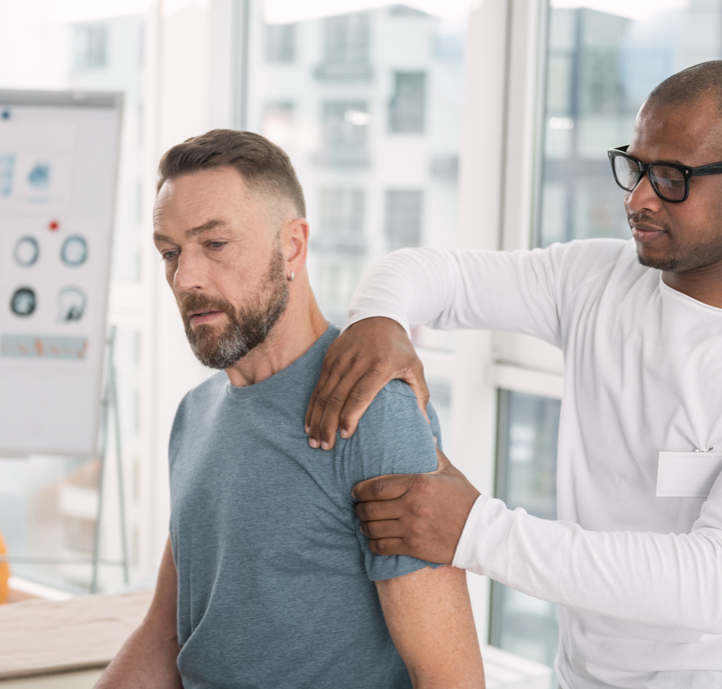South Melbourne 03 9699 2499 | Point Cook 03 8386 7400
Book NowRotator Cuff Tears – The shoulder is an elegant and complex piece of machinery. Its design allows us to reach and use our hands in many different positions. However, while the shoulder joint has great range of motion, it is not very stable. This makes the shoulder vulnerable to problems if any of its parts aren’t in good working order.
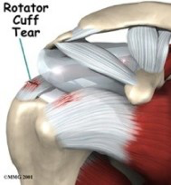
The rotator cuff tendons are key to the healthy functioning of the shoulder. They are subject to a lot of wear and tear, or degeneration, as we use our arms. Tearing of the rotator cuff tendons is an especially painful injury. A torn rotator cuff creates a very weak shoulder. Most of the time patients with torn rotator cuffs are in late middle age. But rotator cuffs tears can happen at any age.
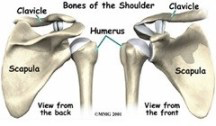
The rotator cuff tendons are key to the healthy functioning of the shoulder. They are subject to a lot of wear and tear, or degeneration, as we use our arms. Tearing of the rotator cuff tendons is an especially painful injury. A torn rotator cuff creates a very weak shoulder. Most of the time patients with torn rotator cuffs are in late middle age. But rotator cuffs tears can happen at any age.
Shoulder is made up of three bones: the scapula (shoulder blade), the humerus (upper arm bone), and the clavicle (collarbone).
The rotator cuff connects the humerus to the scapula. The rotator cuff is formed by the tendons of four muscles: the supraspinatus, infraspinatus, teres minor and subscapularis.
Tendons attach muscles to bones. Muscles move the bones by pulling on the tendons. The rotator cuff helps raise and rotate the arm. As the arm is raised, the rotator cuff also keeps the humerus tightly in the socket of the scapula.
The upper part of the scapula that makes up the roof of the shoulder is called the acromion. A bursa is located between the acromion and the rotator cuff tendons. A bursa is a lubricated sac of tissue that cuts down on the friction between two moving parts. Bursa are located all over the body where tissues must rub against each other. In this case, the bursa protects the acromion and the rotator cuff from grinding against each other.
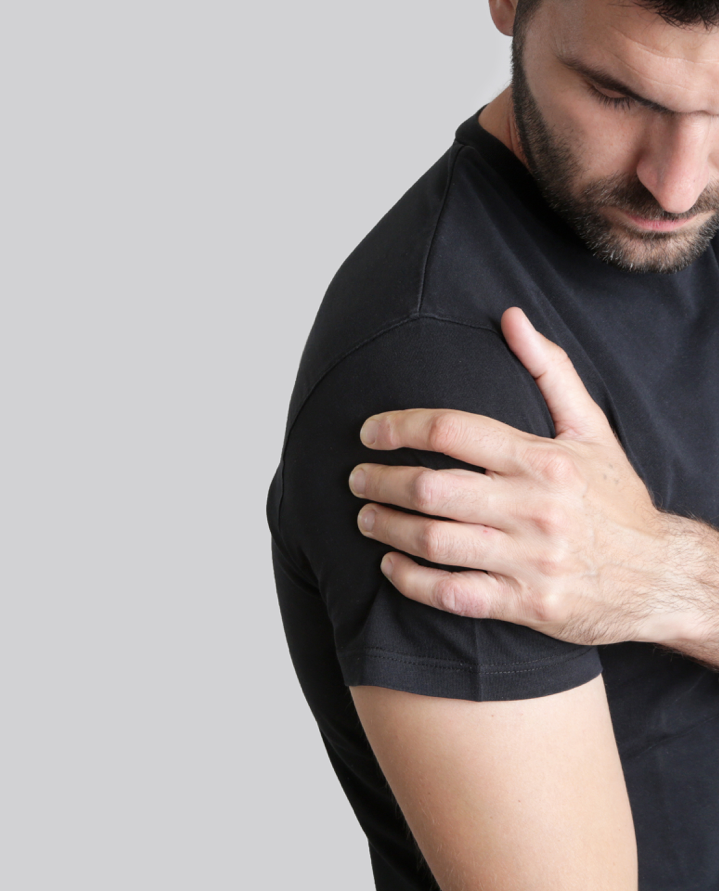
The rotator cuff tendons have areas of very low blood supply. The more blood supply a tissue has, the better and faster it can repair and maintain itself. The areas of poor blood supply in the rotator cuff make these tendons especially vulnerable to degeneration from aging.
The degeneration of aging helps explain why the rotator cuff tear is such a common injury later in life. Rotator cuff tears usually occur in areas of the tendon that had low blood supply to begin with and then were further weakened by degeneration. This problem of degeneration may be accelerated by repeating the same types of shoulder motions. This can happen with overhand athletes, such as baseball pitchers. But even doing routine chores like cleaning windows, washing and waxing cars, or painting can cause the rotator cuff to fatigue from overuse.
Excessive force can tear weak rotator cuff tendons. This force can come from trying to catch a heavy falling object or lifting an extremely heavy object with the arm extended. The force can also be from a fall directly onto the shoulder. Sometimes injuries that tear the rotator cuff are painful, but sometimes they aren’t.
Researchers estimate that up to 40 percent of people may have a mild rotator cuff tear without even knowing it. The typical patient with a rotator cuff tear is in late middle age and has had problems with the shoulder for some time. This patient then lifts a load or suffers an injury that tears the tendon. After the injury, the patient is unable to raise the arm. However, these injuries also occur in young people. Overuse or injury at any age can cause rotator cuff tears.
Rotator cuff tears cause pain and weakness in the affected shoulder. In some cases, a rotator cuff may tear only partially.
The shoulder may be painful, but you can still move the arm in a normal range of motion. In general, the larger the tear, the more weakness it causes. In other cases, the rotator cuff tendons completely rupture. A complete tear makes it impossible to move the arm in a normal range of motion.
It is usually impossible to raise the arm away from your side by yourself. Most rotator cuff tears cause a vague pain in the shoulder area. They may also cause a catching sensation when you move your arm. Most people say they can’t sleep on the affected side due to the pain.
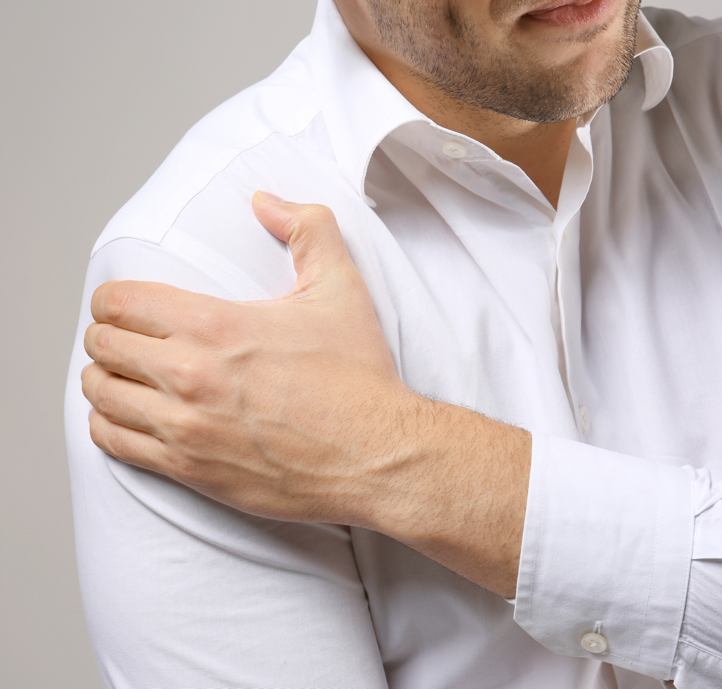

At the Centre for Musculoskeletal Medicine we will ask questions about your medical history, your injury, and your pain. A complete tear is usually very obvious. If your doctor can move the arm in a normal range of motion, but you can’t move the arm yourself, you most likely have a torn rotator cuff.
X-rays won’t show tears in the rotator cuff. However, your doctor may want you to have a shoulder X-ray to see if there are bone spurs, a loss of joint space in the shoulder, or a down- sloping (hooked) acromion.
Your doctor may ask you to have a magnetic resonance imaging (MRI) scan.
At the Centre for Musculoskeletal Medicine our first goal will be to help control your pain and inflammation.
